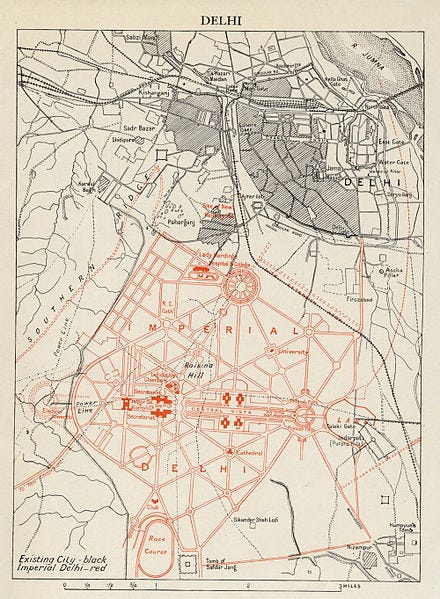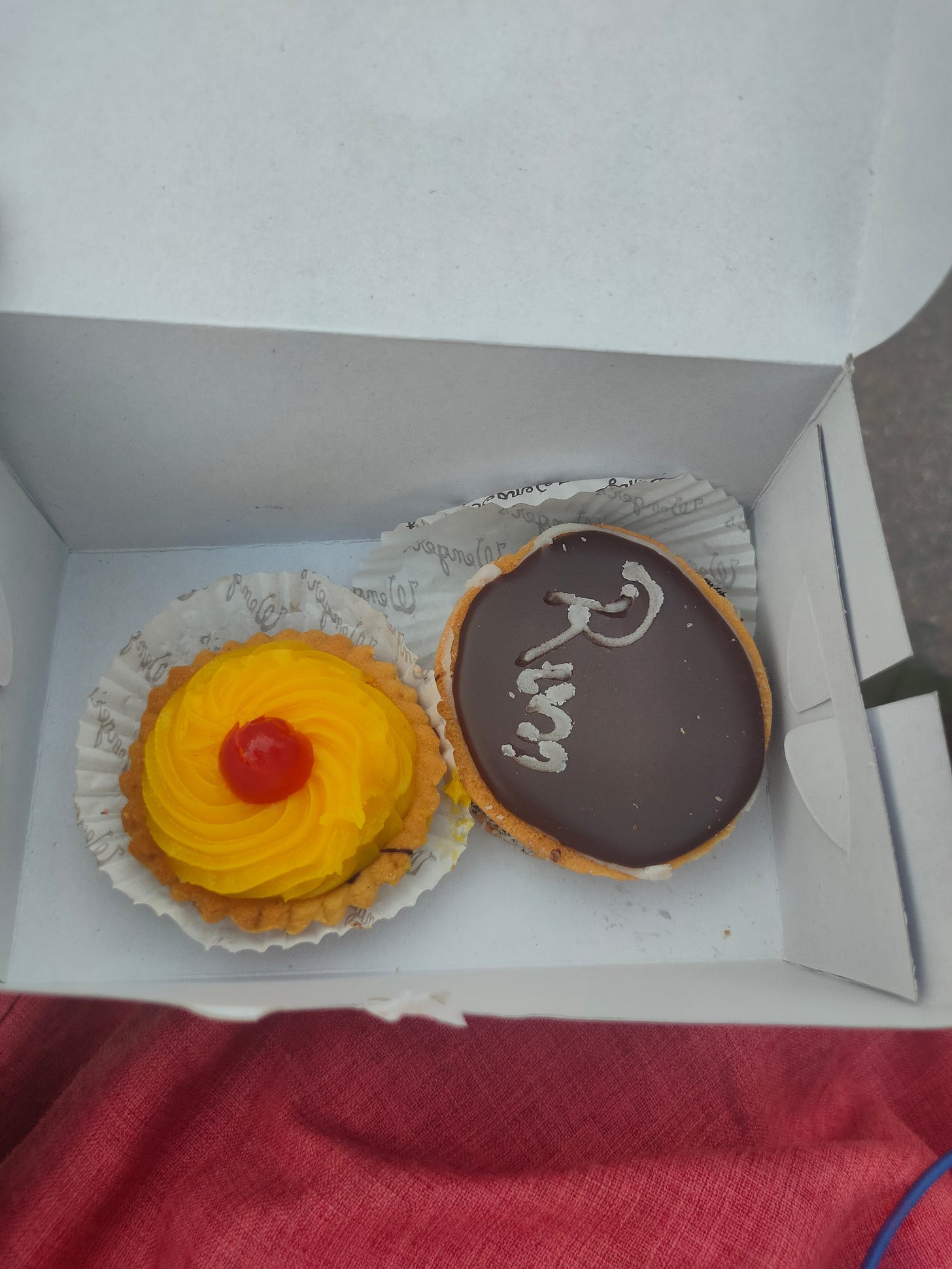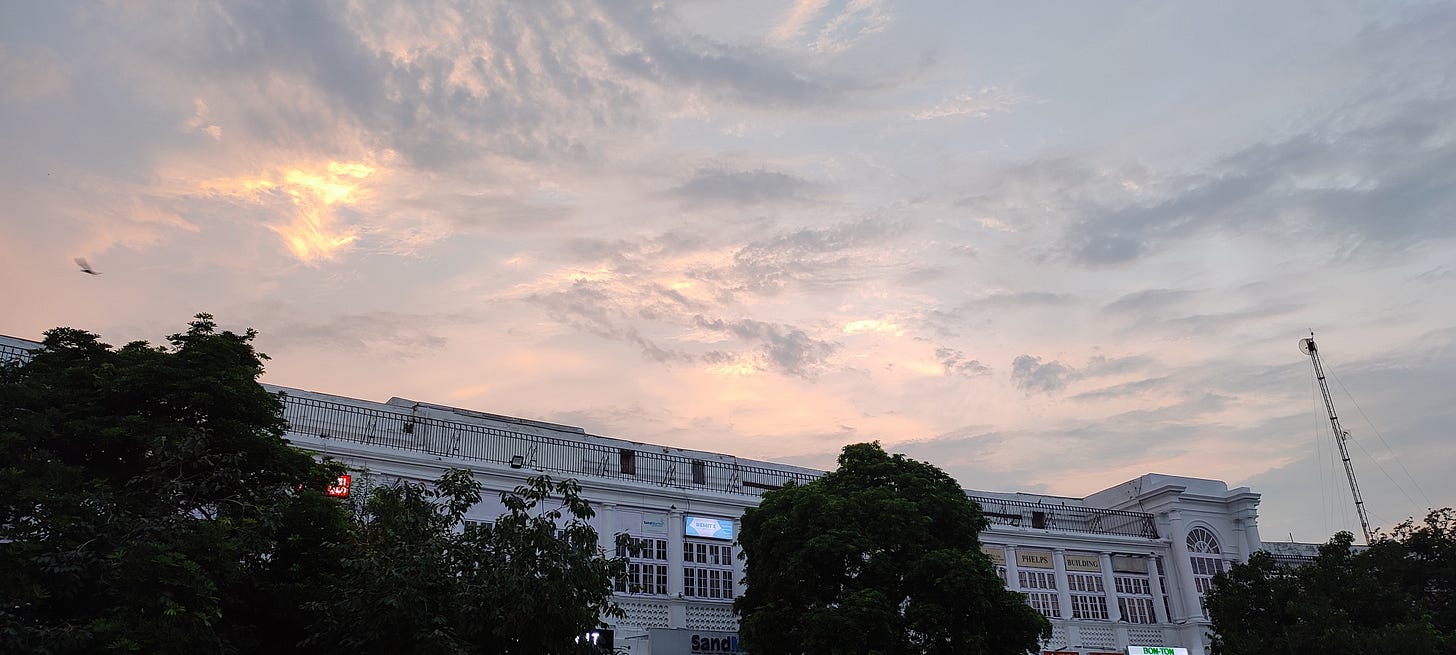A Tale of Wenger's and Connaught Place Through the Years
It is December 1911. The otherwise barren fields north of Delhi are packed with lakhs of spectators seated in temporary amphitheatres. Royals from each state of India, from the Gaekwad of Baroda, the Nizam of Hyderabad, the Begum of Bhopal to the Maharaja of Patiala and more, had assembled in Delhi to witness the Delhi Durbar of 1911, where India, the jewel in the crown of the largest Empire on Earth, was to welcome the newly crowned Emperor of Britain, King George V. The usual melodies of chirping birds was soon drowned out by the resounding vibrations of regal trumpets and ceremonial drums, the dead agricultural lands painted with the sparkle of colour that was carried with the vibrant dresses of the Emperor and his loyal Indian nobles. It is here that, much to the shock of all present in the audience, that the Emperor proclaimed that the capital of the Raj was to be shifted from Calcutta to Delhi, and in doing so, irrevocably changing the course of Indian history.
Delhi at the time was hardly fit to be the seat of the Raj. Unlike Calcutta, which had served as the capital of the Raj for around two centuries, Delhi was no more than a small town on the edge of the Punjab, synonymous with the walled city of Shahjahanabad, the last capital of the Mughal Empire, now known to modern residents of the city as Old Delhi, its four corners marked by Lahore Gate, Lal Quila, Delhi Gate and Ajmer Gate, with some additional boroughs such as Sadar Bazar, Paharganj, Nizamuddin and Firoz Shah Kotla being the only other neighbourhoods that would be identifiable to a modern Dilliwallah. Builders and architects were consulted for the new capital, housed on Raisina Hill, to be known to the world as New Delhi. Edwin Lutyens, tasked with designing the capital, envisioned New Delhi with a grand, domineering vision. The seat of power was to rival the capitals of other imperial powers, such as Rome, Paris and Washington D.C. The land earmarked south of Shahjahanabad was cut up into hexagonal boulevards surrounding the vertically – aligned government complex, known as Central Vista. Lutyens chose to blend his Greek neo-Classical vision with elements from Mughal and Buddhist architecture to create a distinctive look for New Delhi. Built were the Viceroy’s House, a Cathedral, Assembly Parliament, Secretariats, Record Offices, India Gate, a Bungalow Zone, Council Chambers, and so on.
In 1929, the construction of a commercial complex began, to be built in a similar fashion to the rest of New Delhi, to be located north of Central Vista and south of Shahjahanabad, to be known as Connaught Place, named after the Duke of Connaught who had visited India in 1921. Inspired by the Royal Crescent in Somerset, the complex was designed by RT Russell as two rings of concentric circles, marked by its Georgian architecture, double-storeyed buildings and marble-white pillars. As Delhi emerged as a seat of political power, a significant number of British elites flocked here from Calcutta and other parts of the city, who were to act as the clientele of this market. Eventually, a variety of posh establishments popped up in the market, from Dhoomi Mal Art Gallery, Jain Book Agency, Vaish Tailors, the toy store Ram Chandra and Sons, and so on, frequented by the crème de la crème of British nobility.

Mr. and Mrs. Wengers owned a bakery in Kashmere Gate. Operating since 1926, Wenger’s provided baked goods to regiments of the British army stationed in Delhi. With the opening of Connaught Place, they saw an opportunity to expand their consumer base, and quickly moved to the inner block of the circular complex, which was an area frequented by diplomats, Indian royals, businessmen and British officials. In its early years, the lobby of Wenger’s was no less than that of a grand hotel, spread across two storeys, with twenty-foot ceilings and long columns, housed within its walls were a ballroom, a party shop, a cafe, and more. The selection of items available at this place was very limited – chocolate, pineapple, vanilla and strawberry pastries, French, white and twist bread, sponge cake, Swiss chocolates, chocolate cookies, chicken and vegetable patties.
Wenger’s today is almost unrecognizable from that of 70 years back. The ownership of the establishment changed hands in 1945, with the couple selling it to the then general manager, BM Tandon, whose family continues to operate the shop till date. The exodus of its imperial clientele to Britain after independence meant the bakery had to cut down on its operations, as housing a luxurious ballroom and sprawling restaurant was no longer economically feasible. Today, the shop is limited to a small bakery, even lacking any seating, and can be expected to be packed to the brim with customers at almost all times of day. It is not just the physical appearance of the shop that has changed over the years. During the Raj, the prices of Wenger’s were quite steep, leading to most of its patrons being from the uppermost class of Indian society, and while I won’t describe their fare as particularly affordable today, it is clear that its clientele has expanded to not just civil servants and diplomats, but larger sections of Indian society who visit this place for a bite of their baked goodies. The number of items they serve, from a measly dozen or so varieties in the 1930s, has now expanded to an assortment of hundreds of patties, pastries, cakes, breads, kebabs and so on.
Walking into Wenger’s makes you feel like a child entering the magical toy store of his dreams. Hundreds of goodies are laid out in front of you, and unless you’ve come with a definite list of all you wish to try, you will be left perplexed by the assortment on display, unable to decide what you want to snack on. Over the years, I’ve tried a lot of what Wenger’s has to offer. Its patties are wonderfully flaky, filled with freshly baked chicken, mutton or vegetables. Its donuts and eclairs are delectable as well. They also serve decent Shami kebabs, though, a bit on the drier and pricier side. My favourite selection of goods from their shop, though, are their freshly-baked pastries, coated in a sea of wonderful toppings, from the glazed Rum Pastries, to the sweetness of the Pineapple Tarts, the Fruit Tarts topped with a fresh selection of kiwi slice and cherries on top, and their fragrant, vibrant Apple Slice and Blueberry Tarts. I implore you to let your inner child run wild, fall victim to the enchanting whiffs that fill the four corners of this shop, and try Wenger’s delectable assortment of goods to your heart’s content.
Connaught Place has evolved in its own ways over the years. The centre around which the complex’s concentric rings were drawn, initially an open space, came to be filled by an underground market, known as Palika Bazaar, constructed in the 1970s. Modern structures not conforming to the Georgian architectural style also popped up starting from the 1980s, such as the Jeevan Bharati Building designed by Charles Correa in red sandstone, the Jawahar Vyapar Bhavan that fuses Mughal red sandstone with Metabolism from Japan, and various other company offices located on the neighbouring roads, and today, it is one of the more important financial centres of Delhi. In a move to rid the capital’s business district from its explicitly colonial name, in 1995, Connaught Place was renamed to Rajiv Chowk, after former Prime Minister Rajiv Gandhi, though it is still mostly referred to as “CP” by Dilliwallahs. An underground station at the centre of the metro network was constructed in 2005, one that serves as an important intersection between two of the longest lines of the Delhi Metro, the Yellow and Blue Lines. Connaught Place has long shed its identity as a marketplace catering to the whims and fancies of the glitterati of British society. Today, its bazaars and offices lie at the heart of a bustling metropolis, frequented by all walks of Delhi society.
This little imperial-era bakery has seen Connaught Place evolve over the years. An invaluable part of Delhi history and Delhi food heritage, Wenger’s should be on the itinerary for everyone who sets foot in Delhi.
Recommendations:
Fruit Tart (9.75/10), Pineapple Tart (9.75/10), Rum Pastry (9.5/10), Apple Slice (8.5/10), Donut (7/10), Eclair (6/10), Blueberry Tart (8.5/10), Mushroom Patties (8/10), Mutton Shami Kebab (6/10)
Location:
Shop No: A/16 Near, Road, Rajiv Chowk, Block A, Connaught Place, New Delhi, Delhi 110001
A tale of Breakfast, Migration and Cricket - Sardar Ji Poori Wale on Ansari Road in Daryaganj
The food of Dilli is the food of its migrants. And the history of Dilli is the history of migration. If one wants to understand this history, they need not pick up a textbook. A mere glimpse at a list of the most popular foods of Dilli shall suffice. The now-ubiquitous Momo was originally introduced by Tibetan refugees in the mid-1990s. Most Chhole Bhat…
The Best Kebabs in all of Delhi, Ranked
When I first arrived in Delhi, I almost immediately became obsessed with the kebab - minced meat that is typically roasted over a skewer, but in other cases, can be shallow-fried or cooked in a tandoor as well. They caught my attention as I found out that the flavour profiles of Mughlai fare suit my tongue, and kebabs are typically cheaper and lighter t…
Chocolatey Cheesecakes and Cricket Calamities: Tibet Quality Bakery in Mcleodganj
I had expected my short trip to Mcleodganj and Dharamshala, scenic hill towns in the Kangra Valley of Himachal Pradesh, in October ‘23 to be a mood-freshener. My two-day retreat was to be spent watching the Proteas (a team that I support) play World Cup Cricket at the world’s most aesthetic cricket ground, and trying out various Tibetan food items in Mc…

























